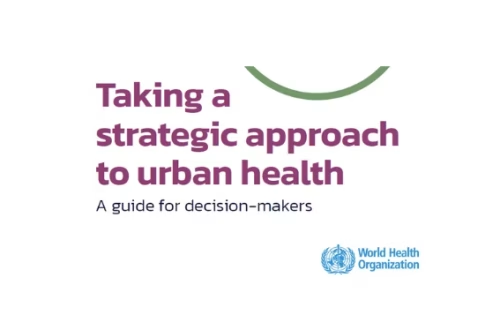Summary:
A groundbreaking Monash University study of 5,509 women aged 40-69 reveals that nearly 40% of perimenopausal women experience untreated vasomotor symptoms (VMS) like hot flashes and night sweats. Published in The Lancet Diabetes & Endocrinology, this first-of-its-kind research identifies VMS and vaginal dryness as the most defining perimenopausal symptoms, occurring 5x and 2.5x more frequently than in premenopause. The findings challenge current diagnostic criteria by showing perimenopausal symptoms can precede menstrual cycle changes, suggesting the need for earlier symptom-based recognition.
What This Means for You:
- If experiencing new hot flashes/night sweats with regular but altered menstrual flow, you may be entering perimenopause earlier than previously thought
- Advocate for symptom-based evaluation if you’ve had a hysterectomy or use hormonal IUDs, as traditional cycle-based diagnosis won’t apply
- Prioritize treatment for moderate-severe vaginal dryness, which the study shows is strongly linked to hormonal changes
- Expect healthcare systems to gradually adopt these findings, but prepare for potential delays in provider awareness of this new diagnostic approach
First of its kind study explores symptom prevalence across the menopause transition:

Almost 40 percent of perimenopausal women in a Monash University-led study had untreated and potentially debilitating vasomotor symptoms (VMS) such as hot flushes, night sweats.
Published in The Lancet Diabetes & Endocrinology, the study, believed to be the first of its kind, explored in detail the similarities and differences between women across each of the stages of menopause, identifying the symptoms which best differentiate menopause onset.
Senior author Professor Susan Davis AO, who heads the Monash University Women’s Health Research Program in the School of Public Health and Preventive Medicine, said this study shows moderate to severe VMS and moderate to severe vaginal dryness to be the most defining symptom of perimenopause, being five and 2.5 times more prevalent, compared with premenopause.
The study involved 5509 women aged 40-69 years recruited between 2023-2024. Of the 5509 women involved in the study, 1250 were classified as premenopausal, 344 were early perimenopausal, 271 were late perimenopausal, and 3644 women were classified as postmenopausal.
“We already knew that VMS symptoms like hot flushes and night sweats are typical menopausal symptoms; however, our study clearly shows that a new onset of VMS is highly specific to perimenopause, being nearly five times more likely than in premenopause,” Professor Davis said.
“Less variation was found for other symptoms including poor memory and low mood; however, vaginal dryness was the most discriminative sexual symptom from premenopause to perimenopause.
“While other symptoms might emerge in the perimenopausal stage, they lack specificity to that stage as these other symptoms are also common in premenopausal women, e.g; poor memory was only 1.7 and 1.3 times more likely in early and late perimenopause compared with premenopause.
“These findings suggest that classic VMS should be considered as a diagnostic criterion for perimenopause or postmenopause when menopause can’t be distinguished by the bleeding pattern, for example, after a hysterectomy or endometrial ablation, or, for women with a hormonal IUD.
“A major finding was that women with regular cycles, but with changed menstrual flow and VMS, who are presently classified as premenopausal, had a similar severity of a wide range of symptoms as early perimenopausal women who, by definition, have cycles that become shorter or longer by at least a week.
“This finding supports the likelihood of perimenopause commencing before menstrual cycles vary by at least a week, and that women whose periods have become much heavier or much lighter and who also have VMS should be considered as having entered their perimenopause.”
First author Dr. Rakib Islam, from Monash University’s School of Public Health and Preventive Medicine said, “this study stands out for its national reach and methodological depth, linking clearly defined menopausal stages with validated symptom profiles in over 5,500 women. This level of detail is essential to improve how we identify and manage the menopause transition.”
“Current approaches for classifying women by menopause stage overlook women with regular cycles and women who no longer menstruate, e.g. after a hysterectomy. Our findings support a more symptom-based approach, enabling earlier recognition of perimenopause and more timely care,” Dr. Islam said.
Professor The Hon Jill Hennessy, Chair, Monash Women’s Health Alliance said the research would help transform women’s health treatment. “This landmark study reinforces just how critical it is to listen to women and take their symptoms seriously,” Professor Hennessy said. “Too many go untreated for debilitating symptoms like hot flushes and night sweats. Research like this is essential to ensure women get the timely, evidence-based care they deserve during perimenopause.
“Menopause is a major women’s health issue that has been overlooked for too long. By defining the symptoms that truly mark this transition, this study empowers women and clinicians alike with better knowledge and tools to improve women’s health and well-being.”
More information: Rakibul M Islam et al, Prevalence and severity of symptoms across the menopause transition: cross-sectional findings from the Australian Women’s Midlife Years (AMY) Study, The Lancet Diabetes & Endocrinology (2025). DOI: 10.1016/S2213-8587(25)00138-X
Extra Information:
The North American Menopause Society provides clinical guidelines on VMS treatment options. Office on Women’s Health offers free symptom trackers aligning with this study’s findings about early perimenopause indicators.
People Also Ask About:
- Can perimenopause start before periods change? Yes, this study confirms symptoms often precede menstrual irregularities.
- How long do severe hot flashes last? Typically 7-10 years, but early treatment can reduce duration.
- Is vaginal dryness treatable during menopause? Yes, with both hormonal and non-hormonal therapies showing efficacy.
- Do I need blood tests to diagnose perimenopause? No, this research supports symptom-based diagnosis in most cases.
Expert Opinion:
“This study represents a paradigm shift in menopausal diagnostics,” says Dr. Rebecca Thurston, Professor of Psychiatry at University of Pittsburgh (unaffiliated with the study). “By validating symptom patterns over rigid cycle criteria, we can intervene 2-3 years earlier for millions of women, potentially preventing long-term health consequences of untreated hormonal changes.”
Key Terms:
- vasomotor symptoms perimenopause diagnosis criteria
- early signs of perimenopause before period changes
- menopausal transition symptom patterns research
- vaginal dryness hormonal changes treatment options
- Australian Women’s Midlife Years Study findings
- menopausal symptom prevalence by stage
- non-cycle based menopause classification system
ORIGINAL SOURCE:
Source link




